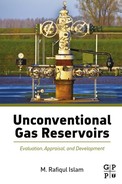6.4. Delinearized History of Characterization of Matter and Energy
Figure 6.1 shows Aristotle's model for four fundamental elements of matter. This is the oldest form of phase diagram that can be found in Europe. This figure is in effect a steady-state model. The elimination of the time function made the diagram appear perfectly symmetrical, which is the essence of Atomism. Democritus is indeed most often cited as the source of the atomic theory of matter, but there's a strong argument/likelihood that what he had in mind was a highly idealized notion, not anything based on actual material structure. For the Greeks, symmetry was believed to be good in itself and was largely achieved by geometric rearrangement of (usually) two-dimensional space. There is an ambiguity as to whether Greek atomists thought of atoms as anything other than an infinite spatial subdivision of matter. Heraclitus' major achievement—which also marginalized him among the other thinkers of his time, unfortunately—was his incorporation of a notion of the effects of time as a duration of some kind, as some other kind of space in which everything played itself out.
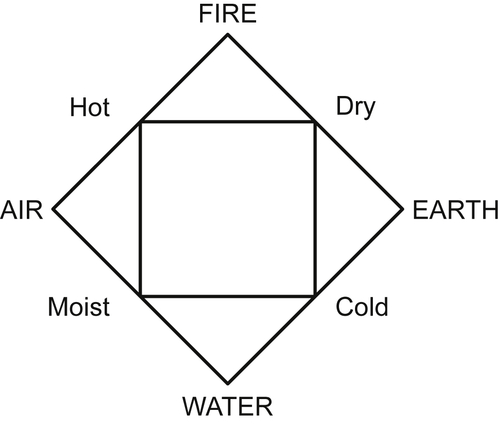
Figure 6.1 Aristotle's four-element phase diagram (steady state).
On the matter of role of time sequence, and universal order, Heraclitus had a profound view that was considered to be a paradox and was rejected (Graham, 2006). Heraclitus wrote:
“This world-order [kosmos], the same of all, no god nor man did create, but it ever was and is and will be: everliving fire, kindling in measures and being quenched in measures.”
In this passage, he uses, for the first time in any extant Greek text, the word kosmos “order” to mean something perceived as “world.” He identifies the world with fire, but goes on to specify portions of fire that are kindling and being quenched. Although ancient sources, including Aristotle as well as the Stoics, attributed to Heraclitus a world that was periodically destroyed by fire and then reborn, the present statement seems to contradict that view, as Hegel also noticed. If the world always was and is and will be, then it does not perish and come back into existence, though portions of it (measures of fire) are constantly being transformed. This contradiction and paradox are erased if “world-order” is replaced with “universal order” and the creation of time1 is preceded to be before creation of everything else (known as “matter” at later time). A consistent and nonparadoxical meaning emerges if the following sequence is used. Creator (absolute time) created the absolute plan (variable time) before creating everything as a function of time.
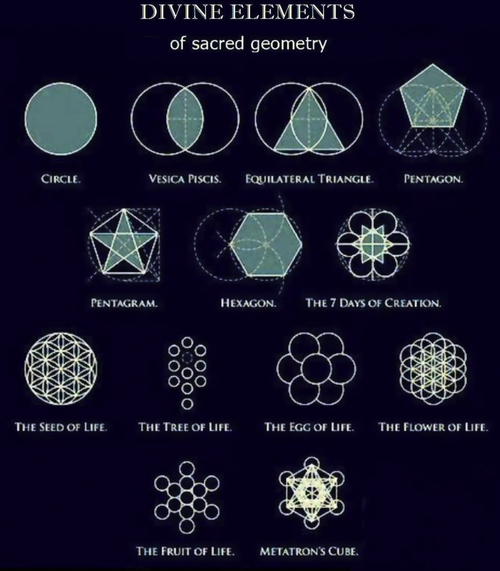
Figure 6.2 Divinity in Europe is synonymous with uniformity, symmetry, and homogeneity, none of which exists in nature.
Figure 6.2 is a depiction of what is sacred in European narration of philosophy. Even though this depiction is attributed to Roman Catholic Church, it is clearly related to features seen in “absolute being” in ancient Greek and later transformed into all aspects of scientific and mathematical cognition. Aristotle said, “The mathematical sciences particularly exhibit order, symmetry, and limitation; and these are the greatest forms of the beautiful.” This can very well be the beginning of reversing science from long-term to short-term through mathematization. Linearization is the ultimate version of such mathematization.
This fascination with homogeneity, symmetry, and other ‘godly’ attributes and assigning them to creation is uniquely European (Livio, 2005). The orient is known to have a different description of nature. At no time, ancient India, Babylonia, or ancient China conflated nature of God with nature of humans, even for Avatars. The most important “transformation” between creator and creation is through the notion of Avatar in India. An avatar is bound to change and is subject to all features of a mortal or natural objects.
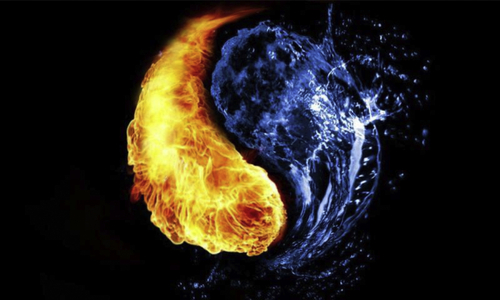
Figure 6.3 Water and fire are depicted through taegeuk (yin–yang).
Figure 6.3 shows depiction of essential elements of matter. This is typical of Yin–Yang concept that has been known in Korean peninsula for the entire recorded period of history. This figure shows the coexistence fire and water, the two main components of universe through asymmetrical pattern while keeping the complimentary nature of those components intact. The broader symmetry that is seen is more thematic than tangible. The central message of this picture is stated through the word of famous mythology professor, Joseph Campbell (1904–1974), who said, “The goal of life is to make your heartbeat match the beat of the universe, to match your nature with Nature.” This is a theme that is in the core of Islamic faith that describes religion as Deen (natural trait) and defines Muslim (root word salama that means surrender and peace) to be the one in tune with nature and natural order. Note in Figure 6.3 how both fire and water parts contain global symmetry but have no local symmetry. Similarly, the flag of South Korea exhibits antisymmetry, or symmetry with a property reversal (Figure 6.4). The white background is a traditional Korean color. It traditionally represents peace and purity. Note that this circle is not tangible and it signifies the never-ending (sustainable) nature of nature. It is antisymmetrical because of the red/blue interchange, both in color and deeper meaning. The deeper meanings represent opposing functions of the universe. The most comprehensive meaning is the existence of tangible and intangible. These seemingly opposite or contrary forces are interconnected and interdependent in the natural universe that allows the existence of both in perfect harmony.

Figure 6.4 Korean national flag contains ancient symbol of creation and creator.
Such harmony is in sharp contrast with European notion that says the universe is constantly degrading or there is a continuous struggle between good and evil. The European notions emerge from a first premise that is similar to the dogmatic notion of “fall” and “original sin.” Nature being a union of opposites in harmony comes from the first premise that nature is perfect and balanced (Khan and Islam, 2012). Many natural dualities (such as light and dark, woman and man, day and night, high and low, hot and cold, fire and water, life and death, and so on) are thought of as physical manifestations of the yin–yang concept.
This concept also reveals the fact that the duality is apparent and it is a matter of perception of the observer whereas it is absolute for the object. For instance, a blind person does not see the difference between night and day but that perception does not change anything about the night and day. This fact demonstrates the absurdity of quantum theory that makes reality a function of perception. Reality cannot be a function of perception, unless there is no such thing as reality. According to Aristotle, one of the mistakes of Zeno in his paradoxes of time and motion is that he did not distinguish between actual and potential infinities. Scientifically, it is the continuity of the time function that eluded Zeno. Aristotle “remedied” it by differentiating between actual (present) and potential (future). Then he asserted, “Everything is potential infinity and nothing is actual infinity.” This in essence reversed the notion of reality concept of Plato. Such absurdity does not occur in oriental cognition that considers the time function properly. Furthermore, all objects (matter and energy) and events (time) in the world are expressed by the movement of “yin” and “yang.” For instance, the moon is yin while the sun is yang; the earth is yin and the heaven (sky) is yang; a woman is yin and a man is yang; the night is yin and the day is yang; the winter is yin and the summer is yang; etc. Yin and yang are opposite, yet work in perfect harmony. This aspect is typical of Qur'anic philosophy as well as everything is reported to be created in pair (as in husband and wife).
The duality in yin–yang is further highlighted in the four markings, called trigrams or Pa-kua symbols, which are opposites of one another diagonally (Figure 6.4). Broken lines are unbroken and vice versa. The trigram together represents the principle of movement and harmony. Each trigram (hangul: kwae) represents one of the four classical elements, namely, heaven, earth, fire, and water. The word “hangul” represents heaven, while kwae means movement and harmony. Each “Kwae” consists of three bars of divination signs that can be either broken or unbroken bars. A broken bar stands for yin while an unbroken bar stands for yang. Numerous combinations are possible, but four basic elements correspond to heaven, water, earth, and fire.
If one replaces each unbroken line in the trigrams by 0 and each broken line by 1, one can see that the symbols represent numbers in the binary (base two) number system. The symbols and their meanings appear below. The binary numbers are read from bottom to top (Figure 6.5).
The top left corner of the flag is three unbroken lines and represent heaven (0). This is significant because both “heaven” and 0 signify the origin. Note that “heaven” is not the one that “righteous” people end up (in theological sense), this is the heaven that originated the entire creation. In English language, the use of the word “heaven” is full of ambiguity that comes from Roman Catholic Church's interpretation of origin of universe and men as well as the myths that purport the notion of “gods and angels” residing in heaven. However, in Arabic language, such ambiguity does not occur. The creator does not reside in Jannah (literally meaning “garden” and often translated as “heaven”) as he is not constrained by space or time. He is also the originator of everything. For instance, Quran (2:117) states: “Originator of the skies and the earth. When He decrees a matter, He only says to it, “Be,” and it is.” The Arabic word for skies, Samawah, is often incorrectly translated as “heavens,” highlighting confusion of the English language.
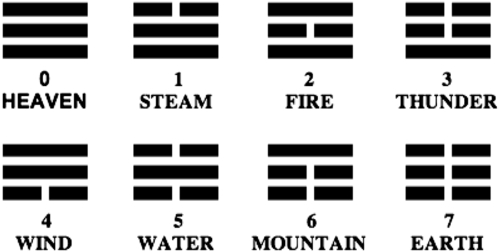
Figure 6.5 Combination of various fundamental elements make up the rest of the creation.
Equally important is the use of “zero” to denominate the source of everything. This “zero” can have two meanings, i.e., nothingness and origin. The nothingness would coincide with ancient Greek word, Χαoσ. However, this zero (sunya in Sanskrit and cipher in Arabic) never implies nothingness as in void. It rather implies the originator, who originated everything from nothing. This is consistent with Islam as well as notable oriental religions. For instance, in Sanskrit, Maha Sunya (Great Zero) refers to the outer space, which is anything but void as in nothingness and most often refers to the creator. Interestingly, the Arabic word “cipher,” while recognized as the origin of the word “zero,” does not represent void, it rather refers to “emptiness.” In ancient Greek culture, however, void refers to the original status of the universe, which was thought to be filled with nothingness, in terms of tangibles, including time. Similarly, the equivalent word in Arabic is As-sama’a, which stands for anything above the earth, including seven layers of skies, is not “heaven,” which is Jannah in Arabic and literally means “garden of paradise.” Qur'an often refers to the creator as the one “in the sky” (e.g., Quran 67:16 says: Do you feel secure that He who is in the sky (sama'a) would not cause the earth to swallow you and suddenly it would sway?).
Opposite to “heaven” is the earth (designated by number Seven), placed at the lower right corner of the flag. This placement as well as the number Seven are both noteworthy and contain deeper meaning. While earth is known to be “just” a planet in European science, it holds a much deeper meaning the Qur'an that defines humans as the Viceroy (khalifa) of the creator (e.g., Chapter 2:30 of the Qur'an specifies man's role as the viceroy), charged with law and order on Earth. The Arabic word for “earth” is Ardha, which means “habitat for humans (the viceroy of the creator).” This outlook is clearly different from the Eurocentric notions, ranging from the vastly discredited “original sin” to widely accepted “evolution” theories (McHenry 2009; Hall, 2008) that detach human conscience from its functioning in a society. Overall, this has been the cognitive malfunction in European thought process. They confused God's traits with traits of creation (starting with Thomas Aquinas). This immediately cut off the relationship between creator and creation. This involved confusion in understanding what is natural—a confusion that continues until today. Then they confused creations (other than humans) with humans due to lack of logical premise defining the purpose of humanity. For them, humans are just another animal and the earth is just another planet. This latter confusion cut off conscience (and ownership of intention) from humanity. The ground became fertile for onset of various forms of aphenomenal cognition, some of which called itself atheism, naturalism, etc.
Water (number Five) is placed at the right top corner. The existence of water as a fundamental element is important. In every culture water is synonymous with life and liveliness. Qur'an places the existence of water before anything else. Opposite to water is fire (number Two) at the lower left corner. The role of fire is opposite to water, yet it is essential to life. Without fire, there is no carbon dioxide, the essence of plant, and therefore, life. Fire represents transition from cold to hot, from life to death, from tangible (water or liquid) to intangible (vapor or gas). This phase change is typical of creation. In fact, the very fact that everything is moving (a function of time) makes it essential to go through this phase of tangible and intangible. Overall, this continues in an eternal circle. Picture 6.1 shows how it is natural to have such dual characteristic in any object.
The next aspect of yin–yang is the existence of such transition in everything at all scales. Figure 6.6 shows how a 24-h clock of yin–yang allows continuous transition as a cycle of life.
Table 6.4 shows the tangible and intangible nature of yin–yang. Yin–yang shows contrast as well as interdependence. For instance, no matter is produced without energy and no energy is produced without matter. Water is needed for plant, which is then needed for fire. This logic also shows nothing is real unless it is part of the positive negative cycle. For instance, fire without water is not real. That would explain why diamond cannot be set on fire even though it is made out of carbon. Similarly, the presence of mass would indicate the presence of energy. This would make the existence of zero energy and infinite mass an absurd concept, even though new cosmic physicists routinely tout that notion (Krauss, 2012).
Figure 6.6 also shows how yin and yang encircle each other alternating as a continuous function of time. As time progresses, yin becomes yang and vice versa. This progression confirms the existence of characteristic time function for every object at every scale. Within the limitations of natural traits that is finite, the following picture depicts the role of two counteracting entities being held in harmony by the “mother.” This mother is significant as in ancient Hindu culture, the supreme God is symbolized by “mother.” In Islam, creator's first two traits literally mean “womb that is infinitely continuous in space” and womb that is infinitely continuous in time.

Picture 6.1 Natural occurrence of yin–yang structure.
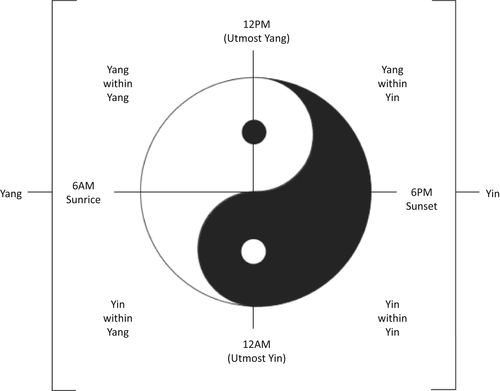
Figure 6.6 Evolution of yin and yang with time. From Website 1.
Table 6.4
The Tangible and Intangible Nature of Yin and Yang
| Yin | Yang |
| Produces form | Produces energy |
| Grows | Generates |
| Substantial | Nonsubstantial |
| Matter | Energy |
| Contraction | Expansion |
| Descending | Ascending |
| Below | Above |
| Water | Fire |
From Website 1.
In large scale, the solar system offers an excellent manifestation of such characteristic time. The moon is moving around its own axis, then around the earth, while keeping pace with the earth that is orbiting around the sun and keeping pace with the sun that is moving both around its own axis as well as around an unknown object. Figure 6.7 shows the configuration of solar movement along with its planets and moons. It is reasonable to assume that such dependence of size on orbital speed reverses for invisible elements. Orbital speed of various known objects are plotted in the above figure as a function of size, along with a reverse relationship for invisible particles. If similar model is followed for invisible structure, smaller than dust speck, the Figure 6.7 emerges. In this figure, dust speck (Dharra in Arabic) is identified as the smallest object that is in line with the avalanche theory, recently advanced by Khan et al. (2008) and Khan and Islam (2012). From there, arises natural characteristic speed in the following scale.
Orbital speeds of various known objects are plotted in Figure 6.8 as a function of size. In this figure, dust speck represents reversal of speed versus size trend. For so-called subatomic particles, speed increases as the size decreases. Note that the actual speed in absolute sense is infinity. It is because each element has a speed in every dimension. This dimensionality is not restricted to Cartesian coordinate. As the number of dimension goes up, so does the absolute speed, approaching infinity for absolute dimension. The characteristic speed also increases as the size of the entity goes down. For infinitely small entity, the speed would approach infinity. This analysis shows how both small and large scales are in harmony with infinitude, associated with “void.” In pre-Thomas Aquinas period, such “void” was synonymous with the creator within whom all the creation was believed to be embedded. Table 6.5 shows some of the characteristic speeds (and thus, frequencies) of various particles.
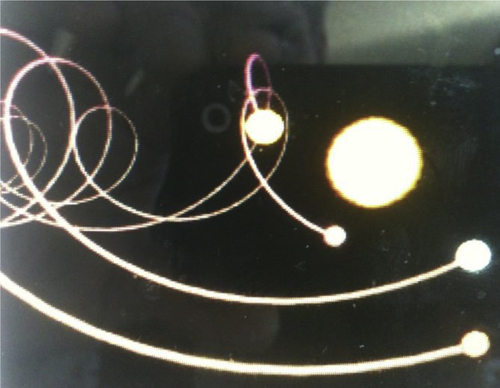
Figure 6.7 The sun, earth, and moon all are moving at a characteristic speed in infinite directions.
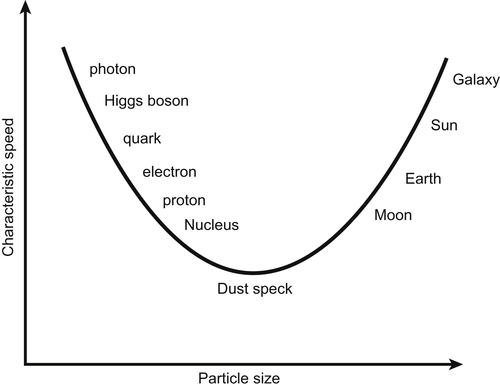
Figure 6.8 Orbital speed versus size (not to scale).
Such characteristic time exists for every object. The characteristic features change during phase transfer or when a life begins (from nonorganic to organic) or ceases for an individual (from organic to nonorganic). In this process, life and death are triggers or bifurcation points as associated time functions change drastically. It should be noted that such transition is subjective and the death of one entity only means death for that object. Here, it is the time function, f(t) that defines the pathway of any entity, within the universal order. This time is not arbitrary and is tightly controlled by the external entity, the absolute time, as presented later in this paper. Following is a list of some of the characteristic time as related to humans:
Earth: day and night, year, pace with the sun
Humans: blink of an eye, sunrise, midday, sunset, sleep and wake, week, month, menstrual cycle; 40 days, 40 years
Society: 40 years, centuries, millennia
Geology: millennia
Cosmos: billion years
The heart rate is typical of natural frequency of humans. Even though, heart rate is frequently talked about in the context of both physical and psychological conditions, brain waves are also characteristics of human activities (Figure 6.9). Change in brain waves is evident during sleep, alertness, meditation, etc. Little is available on how such frequencies can affect overall human conditions, whereas most focus has been on how to alter natural frequencies. What makes it complicated is scientists have little knowledge of how they naturally vary with time as a person ages. Clearly, humans are in control of their brain waves, thereby consolidating the theory that humans are integral part of the universal order and their degree of freedom lies only within their intention.
Also, heart beats themselves change over time. As a sign of every characteristic frequency itself being a function of time, the graph in Figure 6.10 is produced. In this, the data on puberty and older people are extrapolated from published papers (e.g., Larson et al., 2013). Naturally, children are more dynamic and their body parts are renewed faster. This would necessitate faster replenishment of energy. The idea is to nurture natural frequencies, rather than fighting them. New Science does the opposite and every “treatment” is aimed at altering natural frequency, thereby countering natural forces.
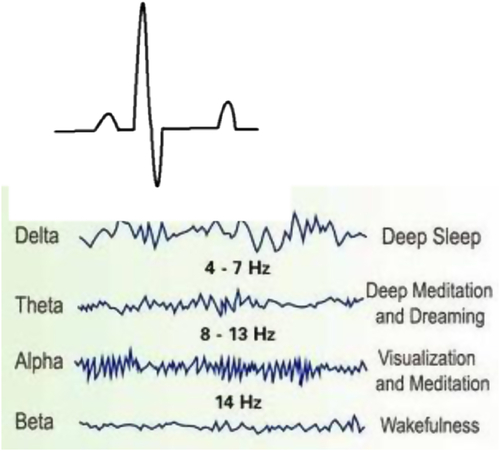
Figure 6.9 The heart beat (picture above) represents natural frequency of a human, whereas brain waves represent how a human is in harmony with the rest of the universe.
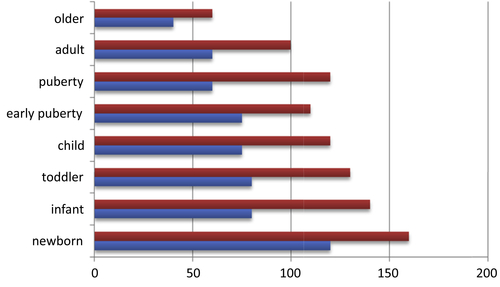
Figure 6.10 Maximum and minimum heart rate for different age groups.
Table 6.5
Characteristic Frequency of “Natural” Objects
| Object | Nature of speed | Average speed sun | Comment |
| Sun | Orbital | 240 km/s | Around unknown object, that is 2.55 × 1020 m away; estimated orbital time 200 million |
| Drift | 19 km/s | Due to variation in galactic rotation | |
| Spinning | Unclear | ||
| Earth | Escape | 240 km/s | To match with the orbital speed of the sun |
| Orbital | 30 km/s | Around the sun | |
| Spinning | 0.44 km/s | At equator | |
| Moon | Broad escape | 240 km/s | To keep up with the sun |
| Escape | 30 km/s | To keep up with the earth | |
| Orbital | 1 km/s | ||
| Spinning | 12 km/s | To keep the same face exposed to one side | |
| Atom, radius 10−9 m | Unknown | Rigid ball assumption | |
| Electron, 10−15 m | 2200 km/s | Under nonexcited conditions (Bohr model) | |
| Proton, 3. 10−15 m | Unknown | Rigid ball assumption | |
| Quark | Unknown | Nonmeasurable dimension | |
| Photon | 300,000 km/s | Rigid ball assumption | |
| Higgs boson | 300,000 km/s | Rigid ball assumption |
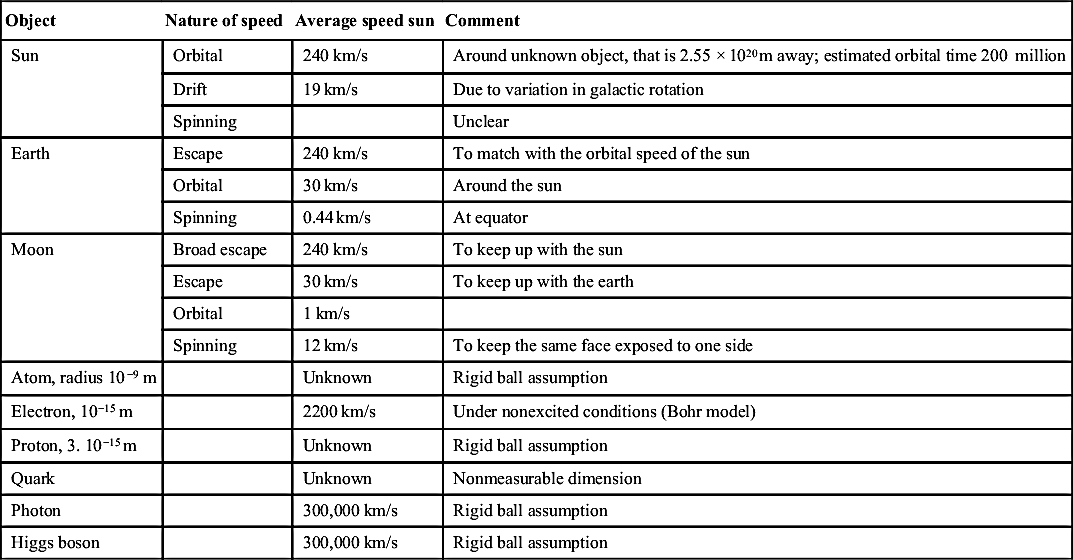
There is what is characteristic but there is also fundamental. Hard to believe/accept, for example, that other natural frequencies in one's body are unrelated to heartbeat frequency. Thus, it would be difficult to believe that an individual's brain wave frequency, for example, could be entirely accounted for from investigation of phenomena occurring within the cerebral cortex alone by itself. Our theory is that we have no control over these frequencies. What we have control over is our intention. Thankfully that does not affect the universal order but doubly thankfully does affect an individual's long-term future. This connection of human intention with long-term future as well as disconnection of the universal order from human intervention is a notion that has been absent in every scientific cognition of post-Roman Catholic Church Europe.
The exchange between two dual and opposite objects continues and it is reasonable to assume that there is no distinction between energy particles and mass particles. The circle in the broader portion of the yin–yang represents the same shape that would house another yin–yang, which itself will house another set. Such trend continues until we reach a state that can be characterized as interface between absolute light (or absolute time), which is the external element. This is consistent with Qur'anic narration of divine traits and matches with pre-Newtonian narration. Figure 6.11 shows the depiction of such infinitude.

Figure 6.11 Tangible/intangible duality continues infinitely for megascale to nanoscale, from infinitely large to infinitely small.
Figure 6.11 shows how “pure light” that surrounds both tangible and intangible, surrounds everything at all times. Such is the connection between time, the creation and the absolute time, and “radiative light” and pure light. Both absolute time and pure light represent infinity.
Furthermore, the notion of male contributing to the life of female and female in turn giving birth to male becomes an integral part of life cycle of humans. With this cyclic balance, there is no superiority of any particular entity over other as long as they belong to the group of creation in general. In addition, every object is in perfect harmony with nature, except humans that are nonideal. This “nonideal” feature has been a crucial matter of contention in European history, ever since the concept of original sin was introduced. If that premise is removed then the premise that everyone is born perfect is consistent with the premise that nature is perfect. European dogma science defined Jesus Christ as the perfect man (a role model), but that is not consistent with his dual status as “son of god.” In addition, very little is known about this “role model.” In fact, modern scientists doubt he ever existed in the role of a messiah. European modern science does not define perfect human, abandoning the debate as “religious mumbo jumbo.” In addition, it does not define good behavior or any purpose for humans, other than maximizing pleasure and minimizing pain. This is in contrast to Christian dogma but equally problematic as it gives rise to chaotic rules, akin to roller coaster ride (Islam et al., 2013).
In summary, both ancient oriental and Greek philosophers support the notion of separation of creator (external entity) from creation (internal entity), each of whom have completely different traits. The creation itself is further divided into tangible and intangible sets with opposite traits, each having continuously decreasing size and similar asymmetry (or duality). Distinction is made between pure light and radiative (or reflective) light. It is only pure light (PL) that is continuous in space and time. Everything else is embedded in PL. This “light” is not a collection of photons or any particle. It is pure energy and does not have any mass associated to it. The conventional denomination of light as a collection of photons each of zero mass does not account for the fact that the sun is losing thousands of tons of mass every second. With the proposed characterization, there is no contradiction in transition from mass to energy. This distinction between PL and radiative or reflective light is necessary but no sufficient condition to truly scientific description of mass and energy. Sequential functionality must be described as a sufficient condition. This requires proper characterization of mass and energy. This depiction is supported by Greek philosophers as well as Augustine of Roman Catholic Church.
..................Content has been hidden....................
You can't read the all page of ebook, please click here login for view all page.
